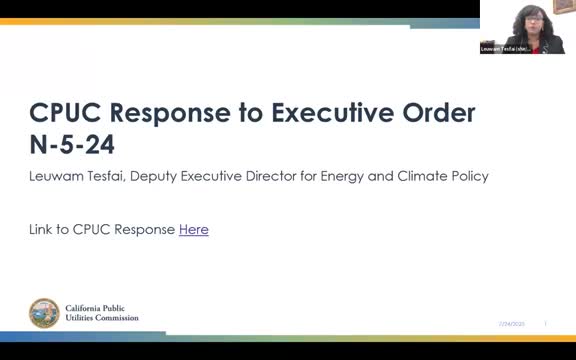California Energy Commission outlines strategies to tackle rising electricity costs
July 26, 2025 | Little Hoover Commission, Other State Agencies, Executive, California
Thanks to Scribe from Workplace AI and Family Portal , all articles about California are free for you to enjoy throughout 2025!

This article was created by AI using a video recording of the meeting. It summarizes the key points discussed, but for full details and context, please refer to the video of the full meeting. Link to Full Meeting
A key takeaway from the discussions was the identification of the rooftop solar tariff structure and wildfire-related costs as the primary drivers of increasing electric rates. The commission emphasized that while California has made notable strides in clean energy, these advancements are at risk due to external factors, including climate change. The report presented during the meeting suggested that many existing programs lack cost-effectiveness, which complicates efforts to manage electricity costs.
The commission proposed several strategies to mitigate rising rates, including a reevaluation of wildfire costs within utility general rate cases and the potential reallocation of climate credits. These measures aim to provide financial relief to consumers while ensuring the sustainability of California's electricity system.
The meeting also provided a comprehensive overview of the electric system's infrastructure, which spans the state and is designed to meet the highest demand for electricity. The California Public Utilities Commission (CPUC) noted that the investor-owned utilities are expected to collect approximately $44 billion from customers this year to maintain and operate this extensive system. This substantial investment underscores the long-term nature of electricity infrastructure and the challenges it poses for rate reduction.
Additionally, the commission discussed the various categories of costs associated with electric utilities, including power purchase agreements, distribution, and transmission costs. The complexities of these costs are often subject to litigation, particularly in general rate cases, which can further complicate the pricing landscape for consumers.
In conclusion, the discussions at the Little Hoover Commission meeting underscored the multifaceted challenges of managing electricity costs in California. As the state continues to navigate its clean energy transition, the proposed strategies may offer pathways to alleviate financial burdens on consumers while maintaining the integrity of the electric system. The commission's ongoing efforts will be crucial in addressing these issues and ensuring that California's energy future remains both sustainable and affordable.
Converted from Hearing on California Electricity Costs (Part 4) - July 24, 2025 meeting on July 26, 2025
Link to Full Meeting
Comments
View full meeting
This article is based on a recent meeting—watch the full video and explore the complete transcript for deeper insights into the discussion.
View full meeting
